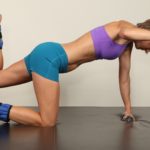
By Shelby Stoner, PHASE IV Exercise Physiologist
By now you have most likely heard of foam rollers and their use in relieving sore muscles and aiding in recovery. Foam rolling is often described as a form of “self-myofascial release,” or SMR. Our “fascia” is the connective tissue that binds and stabilizes the muscles. By massaging it, we can improve our muscle’s range of motion, boost circulation, and break down tightness or knots in the muscle and enhance tissue integrity.
Like self-massage, the use of foam rollers and massage sticks are great methods to aide recovery especially after workouts. Exercise-induced muscle damage signals the repair process. During the repair process, new collagen molecules are formed to help repair the damaged tissue. The natural inflammation that occurs combined with lack of mobility post-exercise is what’s thought to cause muscle adhesions. This is where foam rolling comes in. The use of foam rollers can help minimize the forming of / help break down these adhesions. By manipulating the muscles and surrounding tissues, increased blood flow to the muscle helps deliver more oxygen during the repair process and in turn promotes adaptation of these tissues to withstand our training and activities.
A study in the Journal of Sports Rehabilitation found that foam rolling could increase range of motion, while another study from Canada linked foam rolling to less muscle soreness and greater flexibility. Myofascial release can reduce tissue tension and muscle tightness to increase joint range of motion (ROM). When adhesions bind between layers of tissue, they can cause a muscle to remain in a shortened position, which subsequently increases tension on surrounding muscles and restricts joint motion. Regular use of foam rollers for myofascial release can alleviate muscle tightness, helping to ensure optimal joint ROM and enhance overall movement performance.
Some studies have even shown that foam rolling may fire up your central nervous system which registers and reacts to pain. Your nervous system regulates many of our body’s unconscious functions such as heart rate and blood flow. Research from Japan has backed up this idea by linking foam rolling – independent of exercise – to improved arterial flexibility and vascular function.
Similar to massage, foam rolling stimulates pressure receptors beneath your skin, says Tiffany Field, director of the Touch Research Institute at the University of Miami. “When you stimulate those pressure receptors, that stimulation increases vagal activity in the brain, which has been linked to relaxation of the nervous system, reduced levels of stress hormones like cortisol and improved pain tolerance,” she explains. In other words, foam rolling may be blocking out stress and quieting your body’s pain-detection centers by promoting a feeling of relaxation after a workout.
Want to try foam rolling but don’t know where to start? Check out these helpful tips below.
General Rules of Foam Rolling:
- When you have completed foam rolling, you should feel better, not worse.
- Roll out before and after workouts an in conjunction with stretching.
- Rollers should never cause bruising.
- Be careful of boney prominences. It is best to AVOID applying direct pressure to these areas.
- Always stretch the muscle after foam rolling.
- Use ice on painful to assist improvement.
Looking for personalized foam rolling and stretching guidance?
At PHASE IV we create customized strength training plans that are designed to prevent injury and improve structural integrity. Call us to schedule a complimentary 30-minute consultation at our facility in Santa Monica. 310-582-8212








